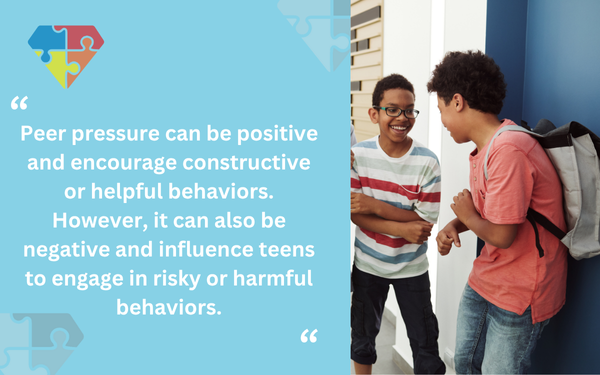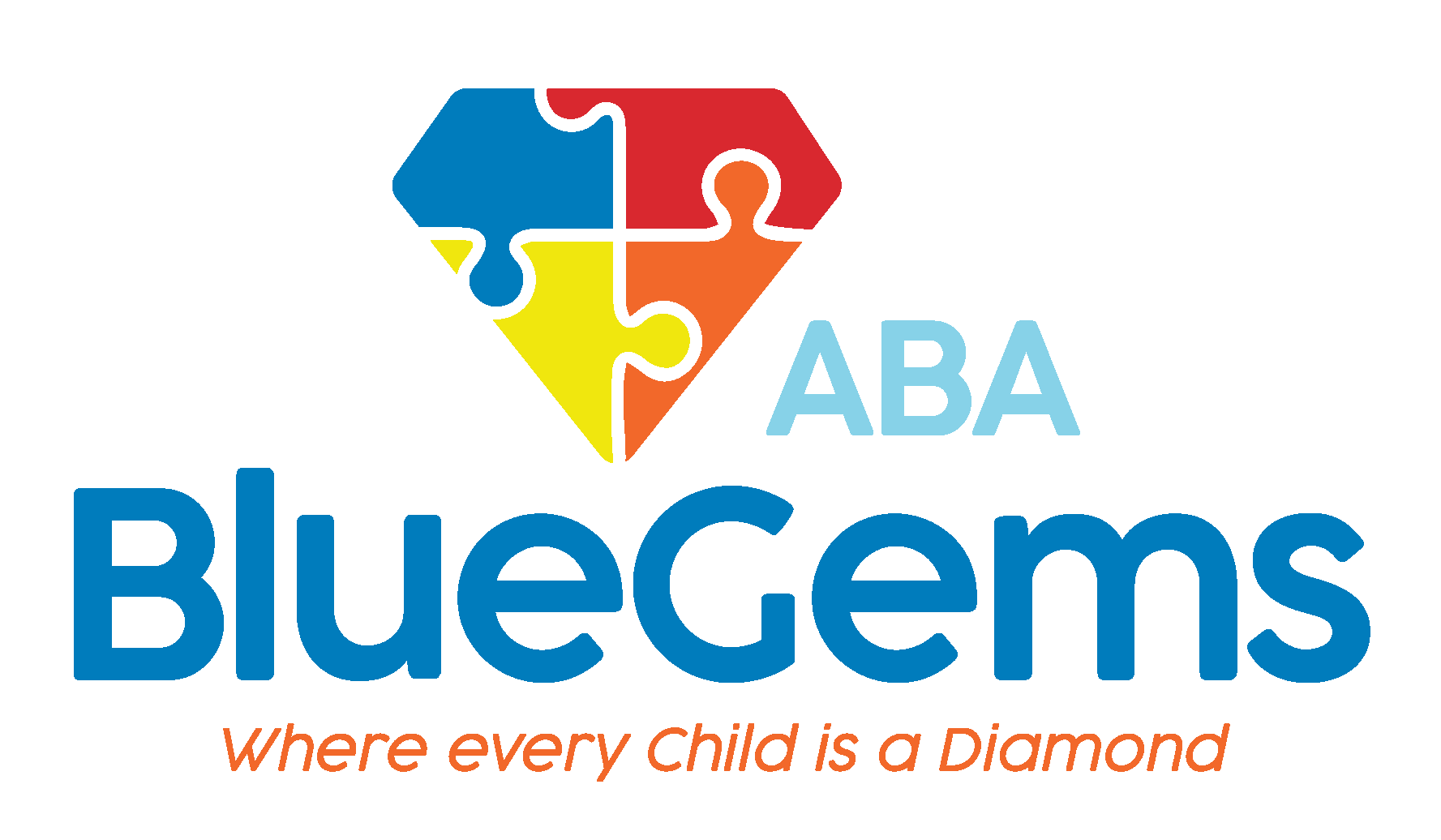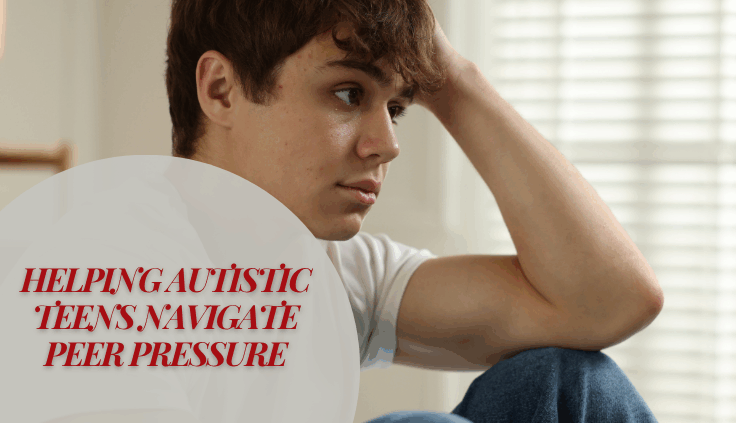Helping Autistic Teens Navigate Peer Pressure
Peer pressure is something that everyone faces in their lives, but can be especially severe in the teenage years. Navigating this part of life can be challenging for any teen, and it can present unique challenges to teens with autism spectrum disorder (ASD) who already may struggle with communication and social interactions.
These situations can be particularly complex for teens with autism, as they may be more susceptible to giving into negative peer pressure or may feel like more of an outcast because they aren’t able to interpret non-verbal cues such as sarcasm and body language.
Through applied behavior analysis (ABA therapy), teens on the autism spectrum can learn how to detect peer pressure so they can interpret and effectively respond to it.
Here are some ways ABA therapy can help autistic teens navigate peer pressure.
Key Takeaways
- Peer pressure can be particularly confusing and overwhelming for autistic teens.
- Teens on the spectrum may struggle with interpreting subtle social cues and feeling pressure to fit in.
- ABA therapy provides structured, individualized strategies to recognize and manage peer pressure.
- Skills such as self-awareness, boundary setting, and identifying safe environments are vital tools.
- Safe role playing and trusted support systems empower autistic teens to respond confidently.
Table Of Contents
Why is Peer Pressure Challenging for Autistic Teens?
Teenage years are usually challenging for all teens, though autistic teens may face unique challenges with peer pressure during this formative period. That’s because peer pressure comes in many forms and isn’t always direct and “in your face.”
Peer pressure can be positive and encourage constructive or helpful behaviors. However, it can also be negative and influence teens to engage in risky or harmful behaviors.

This is why it’s so crucial to help autistic teens identify peer pressures so they can navigate them effectively.
As mentioned above, teens with autism commonly struggle with accurately interpreting social cues. They may not pick up on the subtle signs in social interactions and communication that indicate there’s peer pressure.
These gray areas don’t often fit in with the direct black-or-white thinking of most autistic teens.
In addition, they already may be experiencing anxiety in social situations and trouble communicating effectively — both of which can become heightened by peer pressure.
Since many individuals who have autism really want to fit in with their peers, they may be more susceptible to giving into peer pressure, even if it influences them to engage in negative behaviors or activities.
On top of all of that, peer pressure comes at teens from many angles today. It’s not just direct, in-person peer pressure that they have to deal with but also digital peer pressure that comes from online sources such as social media platforms and group chats.
| Challenges for Autistic Teens | How ABA Therapy Helps |
|---|---|
| Struggling with non-verbal cues like sarcasm and body language | Teaches cue interpretation using visual examples (TV, movies) and role play scenarios |
| Social anxiety and communication difficulties | Builds foundational communication skills and comfort in social settings |
| Rigid, black-and-white thinking patterns | Introduces flexible thinking through exploration of gray-area social scenarios |
| High susceptibility to peer pressure and desire to fit in | Fosters self-awareness, values identification, and boundary setting |
| Digital peer pressure from social media and group chats | Guides teens through evaluating online content and recognizing influence patterns |
How Can ABA Therapy Help Autistic Teens Navigate Peer Pressure?
Following basic ABA therapy strategies, therapists can help autistic teens more successfully navigate peer pressure.
At a very basic level, helping children with autism improve their communication skills and be more comfortable in social situations will go a long way to providing foundational support for the situations they may encounter as teens.
In terms of specific approaches to peer pressure, therapists can help autistic teens develop recognition skills and self-awareness.
To be able to handle peer pressure effectively, individuals must first be able to accurately identify it. This is a skill that can be learned like any other, which is why fundamental ABA therapy strategies can work in this regard.
Therapists can help autistic teens identify common signs of peer pressure by watching movies or TV shows, pointing out peer pressure and discussing it. They can role play common scenarios where peer pressure might occur and what it might look like.
They can even expose autistic teens to peer pressure in controlled and safe environments such as group sessions with other autistic teens, guided by an ABA therapy team.
From there, building self-awareness will help autistic teens understand what their own feelings and values are, as well as boundaries they may want to set for themselves.
ABA therapists can help autistic teens identify any physical feelings that might signal discomfort to them, as well as lay out things that would be non-negotiable for them in terms of boundaries.
Part of this process will help autistic teens understand some environments that may make them feel stressful and others that might make them feel safe.
Once these things are in place, ABA therapists can help autistic teens identify people who can be their “trusted allies,” such as peers they feel comfortable with and teachers, professionals and other adults they can rely on when they need help in social situations.
Part of role playing peer pressure scenarios at this point can also include putting some of these practices into place, and developing a script for how they can respond to peer pressure in a healthy and effective way.
Blue Gems ABA Can Help Autistic Teens Navigate Peer Pressure
Peer pressure can be complex for any teen today, but especially so for autistic teens. By improving speech and being more comfortable in social situations, as well as developing recognition skills and self-awareness, ABA therapy can help autistic teens navigate this challenging part of their lives.
At Blue Gems ABA, our experienced therapy team can craft targeted interventions to help support autistic teens as they work to navigate peer pressure.
To learn more, please contact us today.
FAQs
- Q: What is peer pressure?
A: Peer pressure is the influence from peers to act in a certain way, which can be either positive or negative. - Q: Why are autistic teens more vulnerable to peer pressure?
A: Because they may have difficulty reading social cues and may have a strong desire to fit in with peers. - Q: How does ABA therapy help with peer pressure?
A: ABA therapy helps autistic teens recognize social pressure, develop communication tools, and set personal boundaries. - Q: Can ABA therapy address digital peer pressure?
A: Yes. Therapists discuss online scenarios and help teens build awareness around digital influence. - Q: What are trusted allies and how are they identified?
A: Trusted allies are people like teachers, therapists, or peers whom teens feel safe turning to during difficult situations.




